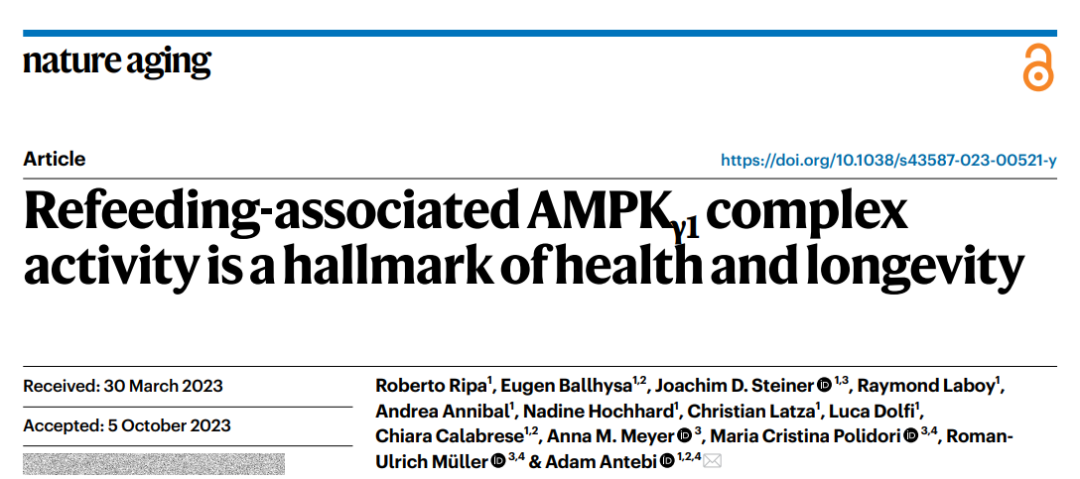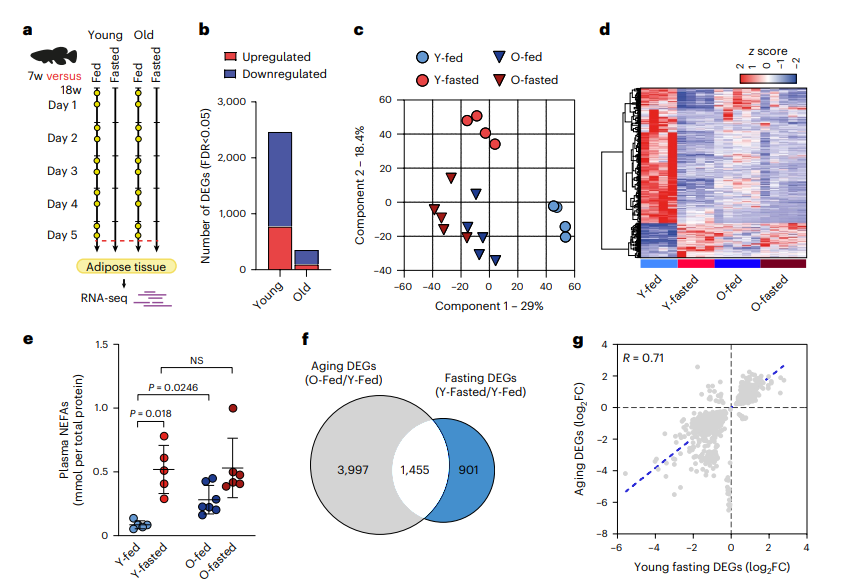The life-extending benefits of fasting only occur at a young age
2023-11-25

Among various dietary interventions, intermittent fasting has always attracted much attention. Its execution process is not complicated and requires only consuming food during specific time windows and fasting at other times, so it is more easily accepted by ordinary people. Various studies in the past have confirmed that fasting can promote metabolic health, help maintain blood sugar and blood lipid levels, and reduce the risk of diabetes. In addition, fasting can also improve nervous system function and extend individual life span.
Despite the many benefits of fasting, in various model organism experiments, this method seems to be only effective in young individuals. If fasting is introduced when the animals are older, they will not gain more benefits. , nor can it extend life span. Why does the same method have different results in young and old individuals?
In a new study in the journal Nature Aging, scientists from the Max Planck Institute for the Biology of Aging in Germany revealed the secrets with the help of special fish such as killifish. Killifish is an animal that ages rapidly. It often only takes a few months to go from young to old, so experimental results can be observed quickly.

In the experiment, the authors tried to make young and old killifish undergo intermittent fasting at the same time. Since the fat tissue changes significantly during the fasting process, they first examined the fat tissue of the killifish.
For young killifish, fasting directly changes the transcriptome of adipocytes and downregulates the activity of multiple metabolic pathways, including the tricarboxylic acid cycle, glycolysis, and fatty acid synthesis. At the same time, fasting also induces Genes related to autophagy and negative regulators of cell proliferation. These results indicate that fasting can reduce energy consumption and reduce cell proliferation rate.
But old killifish don't seem to eat this way. Even if they are fasted, their adipose tissue rarely responds, and the changes in their gene transcriptome are also very inactive. It seems that there is no difference between fasting and normal eating. . Fasting even caused the upregulation of inflammation-related genes in older killifish, increasing their inflammation levels.

Fasting affects young and old killifish differently
Surprisingly, even if fasted old killifish were allowed to resume their diet, their metabolic status and genetics would not change. Taking these results together, the authors suggest that as they age, killifish have permanently entered a fasting-related physiological state and therefore no longer respond to fasting methods or are altered by food intake.
After comparing adipose tissue at different ages, the authors found the reason for such a big difference: a type of protein called AMP kinase (AMPK) changes in older individuals. AMPK is composed of different subunits and participates in the energy sensing process in the body. During the cycle of fasting and eating, AMPK subunits γ1 and γ2 are oscillatoryly expressed to regulate the body's response to different dietary states.
With age, the activity of AMPK's γ1 subunit will continue to decrease, this regulatory ability is lost, and the body will be in a fasting-related metabolic state for a long time. When the authors tried to restore gamma subunit expression to old killifish, their permanent fasting state was altered, and the killifish also appeared healthier and lived longer.
According to the study's analysis, this change in killifish also exists in humans. The expression of the γ1 subunit of AMPK also decreased in some tissue samples from the elderly. The healthier the tissue sample, the higher the expression level of the γ1 subunit.
The authors note that these results are not sufficient to directly prove that the AMPK γ1 subunit is involved in healthy aging, but provide a potential clue. On this basis, they also plan to further explore the molecules that affect AMPK activity during the aging process to achieve a healthier aging process.
Read More :
- How many steps should you take every day to stay healthy and live longer?
- Why does the brain delete memories from before the age of 2?
- Reducing single-use cutlery with green nudges: Evidence from China’s food-delivery industry
- Can eating spicy food cause death?
- After being hypnotized, can people only be obedient?


